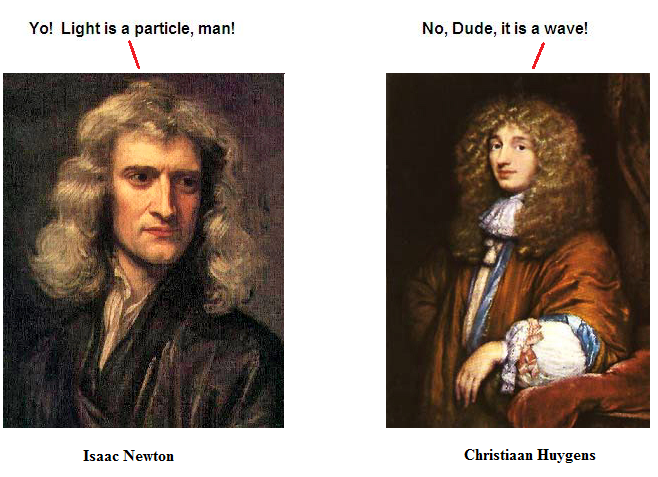Today (April 14, 1629) is the birthday of Christiaan Huygens, a mathematician and physicist who took part in the world scientific revolution through the wave principle that light propagates in waves.

Christiaan Huygens was born on April 14, 1629 in Den Haag, Netherlands.
Studied law, and mathematics at Leiden University. After that, he started
studying science. Huygens discovered the lens of the telescope. He studied the
sky with it. It was designed by Huygens, a simple eyepiece used in low-cost
telescopes today. He attracted worldwide attention due to his wave theory that
light propagates in waves. Huygens' theory later helped to explain the
wave-particle duality that light has the duality of particle and wave. Huygens'
famous discovery was that "every point of a wave interface can be
considered as the starting point of the second wave of waves. This is called Huygens
philosophy.

In 1655 he discovered Titan, the largest satellite of Saturn. Larger
than Mercury, it is the largest satellite in the Solar System. The previous
largest satellite was Jupiter's "Comet". In 1656 he also explored
the rings of Saturn and discovered that they were made of small rocks. Huygens,
who discovered Titan, is named for the astronomical landing vessel on Titan
sent by NASA in the United States. The spacecraft was sent to study Titan,
which has a dense atmosphere similar to that of the Earth's atmosphere millions
of years ago.


In 1659, Huygens explored the Orion nebula and drew a model of it. His
painting is the first map of the Orion volume. Through his television, Orion
separated the different parts of the atmosphere and gave clear explanations of
it as early as the 17th century. In honour of this work, the luminous centre of
the Orion cluster was named the "Hygiene Area" in his memory. Huygens
also invented the pendulum clock to help determine time. He discovered that
even if he operated only one of the two pendulums, which could be built on a
single source of flexibility, the movement would be carried to the next
pendulum and the same vibration and counter-vibration would occur alternately.
This pendulum swing is still found in science centres today.


He also rewrote Isaac Newton's second law of motion into a quadratic
equation. At the request of Eloise Pascal, he wrote a book on the theory of
probability and published it in 1657. His contribution to developing
contemporary computational and differential calculus is considered important.
Christiaan Huygens, who took part in the World Scientific Revolution through
wave theory, passed away on July 08, 1695, at the age of 66, in The Hague,
Dutch.
Source By: Wikipedia
Information: Dr P. Ramesh, Assistant Professor of Physics, Nehru Memorial
College, Puthanampatti, Trichy.


.jpg)

No comments:
Post a Comment